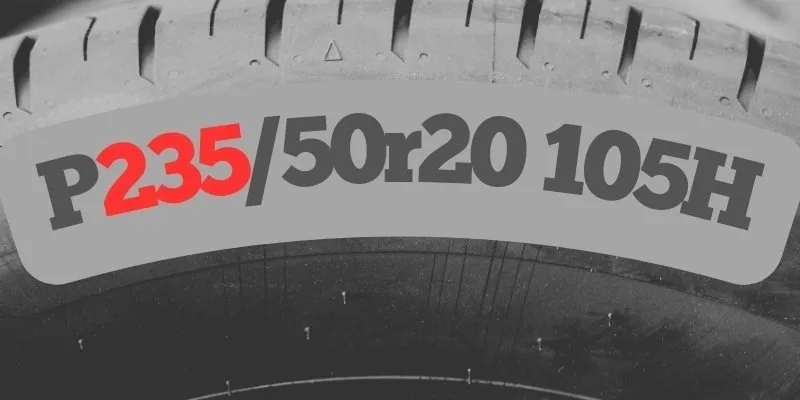What Does 235 Mean on a Tire?

The number “235” on a tire indicates the tire’s width in millimeters, measured from sidewall to sidewall. This measurement is crucial for understanding how your tire will interact with the road, influencing both performance and safety. Knowing what this number means helps you make better choices when selecting the right tires for your vehicle.
Understanding Tire Size
When you look at the sidewall of your tire, you’ll see a sequence of numbers and letters, like “235/55R17.” The first number, “235,” represents the tire’s width in millimeters.
This width is the distance from the outer edge of the sidewall to the inner edge, which is critical in determining how your car grips the road.
Why Tire Width Matters
The tire width is an essential factor in how your vehicle handles on the road. A tire with a 235 mm width offers a good balance between stability, grip, and fuel efficiency.
Wider tires, like a 235 mm tire, typically provide better traction because they have a larger surface area in contact with the road. This increased traction can improve handling and braking performance, especially in wet or slippery conditions.
However, while wider tires can enhance grip, they may also lead to slightly higher fuel consumption due to increased rolling resistance. This is because more energy is needed to move the tire, which can affect your car’s overall fuel efficiency.
Aspect Ratio
The “235” is just one part of the tire’s size. The numbers that follow it, like “55” in “235/55R17,” represent the aspect ratio. This ratio indicates the height of the tire’s sidewall as a percentage of its width. In this case, the sidewall height is 55% of 235 mm.
Understanding the aspect ratio is important because it affects the ride quality and handling of your vehicle. A higher aspect ratio means a taller sidewall, which generally provides a smoother ride by better absorbing bumps and road imperfections.
Conversely, a lower aspect ratio often results in a sportier, more responsive driving experience but can lead to a firmer ride.
Choosing the Right Tire Width
Selecting the correct tire width, such as 235 mm, depends on your vehicle’s specifications and your driving needs. It’s crucial to follow the manufacturer’s recommendations for tire size to maintain the vehicle’s intended performance and safety.
If you’re considering changing your tire size, think about how it will impact your driving experience. A wider tire, like 235 mm, can offer improved grip and stability, particularly in cornering situations.
However, it might also make the steering feel heavier and slightly reduce fuel efficiency. On the other hand, a narrower tire might improve fuel economy but could compromise traction, especially in adverse weather conditions.
Decoding Tire Markings
Understanding tire size involves more than just knowing the width. Let’s break down what each part of a tire size, such as “235/55R17,” means:
- 235: The tire’s width in millimeters.
- 55: The aspect ratio, indicating that the sidewall height is 55% of the tire’s width.
- R: This stands for radial construction, the most common type of tire construction for passenger vehicles.
- 17: The diameter of the wheel rim in inches that the tire is designed to fit.
Each part of this code provides essential information that ensures you choose the right tire for your vehicle.
Impact on Vehicle Performance
The size of your tires, including the 235 mm width, plays a significant role in your vehicle’s overall performance. Tires that are too wide or too narrow for your car can lead to issues like uneven wear, poor handling, and potential safety concerns.
By understanding what the numbers on your tire mean, you can make more informed decisions that keep your vehicle running smoothly and safely.
Conclusion
In conclusion, the “235” on a tire refers to the tire’s width in millimeters, a crucial factor in determining how your vehicle interacts with the road. This number significantly impacts grip, handling, and overall safety.
By understanding what this number means and considering other related tire specifications, you can select the best tire size for your vehicle. Always follow your car manufacturer’s guidelines to ensure optimal performance and safety.

Meet Caitlin McCormack, a Tire Size Expert and Blogger Passionate About Everything Related to Tires. With Years of Experience in the Tire Industry, Caitlin Has Become an Expert in Tire Sizes and Their Impact on Vehicle Performance.
